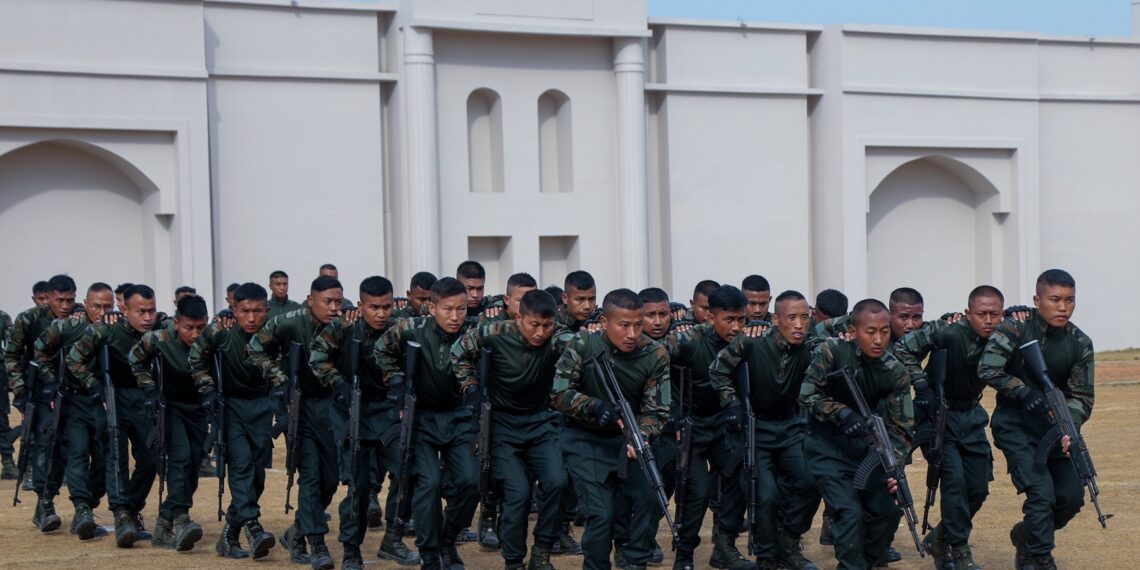By Jaideep Saikia
While much of the national security concerns that the nation will have to grapple with in 2025 have been inherited from the past couple of years, a mature state needs to continually assess the emergence of newer concerns.
A security concern that came to the fore, say, over a year ago, may metamorphose and metastasise to not only take ominous shapes but propel a domino effect and take herculean proportions.
Therefore, it is important to bracket out phenomena and apply Occam’s Razor before bushfires become unmanageable.
Perhaps the concept of “strategic backburning” needs to be incorporated into security management in the Indian context.
The article mulls over a few aspects that bedevil the North East.
A remote incident which could have been localised and “bracketed” out went on to become unruly and intractable in the case of Manipur.
Similarly, how the situation in the state was permitted to flare up and fester by nefariously “borrowing” from the fires of Myanmar should have been pre-empted and prevented.
The knowledge that the Indian security apparatus had about the presence of Indian Insurgent Groups (IIGs) in Myanmar’s Sagaing Division in three near clusters and beyond should have been an “early warning” that trouble from across Myanmar could enter Manipur, especially as the Coordination Committee (now Group of Five or G-5) has a Meitei configuration.
In a scenario charged by serious ethnic schism, it is only to be expected that insurgent groups of contesting denominations would not only enter the fray to “protect” their respective parishes, but avail of the prospect to make themselves visible and relevant.
In other words, the opportunity to fish in troubled waters would always be looked out for by any insurgent group.
Assam has witnessed it in the case of the United Liberation Front of Asom when it entered the state’s social space during the Students’ Agitation against illegal migration from Bangladesh.
The undivided National Socialist Council of Nagalim arose from the ashes of a “failed” Shillong Accord, and today the civil unrest in Myanmar has been taken advantage of by a plethora of IIGs by aligning themselves with the Tatmadaw to quell the rebellion that erupted after the military takeover of the “Land of Jade”.
The IIGs—by way of quid pro quo—would not be harassed by the Myanmar Army as in sundry early years. All the three examples postulated above continue to be a headache for New Delhi.
It is unfortunate that the institutional memory of the Indian state which has battled countless insurgencies and terror action should have to continually reinvent the wheel.
Indeed, certain observers of conflict are beginning to wonder whether New Delhi has a “war book” at all for the “little wars” that are being waged in the North East, and which New Delhi is attempting to address.
Or, has it been a story of mere stimulus-response since 1947?
If the situation in Manipur can (and should!) be a lesson for the security managers in New Delhi, then how the Nagaland Peace Process and other events in Nagaland and Southern Arunachal Pradesh are unfolding should be a wake-up call.
ALSO READ: India completes 9.2 km border fencing at Manipur’s Moreh: MHA Report
25 December 2024 (Christmas Day) came and went. The expectant Naga people are faced with disappointment yet again.
While there can be no question of either sovereignty or even a separate constitution for the Naga people, aspects such as a separate flag (which would be subservient to the Indian national flag) can certainly be considered, especially if it provides steam for the talks.
Greater Nagalim which is seeking to incorporate parts of Arunachal Pradesh, Assam and Manipur, too, is an impossibility.
It would interest readers to learn that when this author delivered a lecture to and interacted with the students of Kohima not too long ago, the clear winds that were drifting were that the Nagas of present territorial Nagaland would be content with the current confines.
New Delhi should engage this training among the Nagas, especially as there is now a reported new demand for “third-party intervention”.
Anti-India powers are looking for and perhaps egging on the belligerents for just such a fallout. New Delhi needs to be cognizant of this important aspect as it seeks to negotiate with a group that has circumnavigated the globe to embarrass India.
The reference that is being made is how the Naga insurgent groups—presently variegated—took anti-India support from China, Pakistan and even the United Kingdom where the Father of Naga Insurgency, Angami Zapu Phizo resided and directed his movement until his death.
If the narrative in the present-day Nagaland is that there should be a solution to the Indo-Naga conflict soon and as aforesaid within the confines of present-day Nagaland, repeated tours by this author to Naga-dominated areas of Manipur elicited an express expectation that they are a subset of the NSCN (IM)’s demand for a Greater Nagalim.
This was evident when this author broke bread with the villagers of Thuingaleng Muivah’s ancestral home in Somdal (Ukhrul) and in Maram (Senapati/Kangpokpi). This is once again a riddle that New Delhi would have to fit into the larger picture of “strategic backburning” and management.
Recently the security forces stationed in and around Miao recovered a “significant cache of weapons near MS 27 along the Miao-Vijaynagar axis in Arunachal Pradeesh’s Changlang district”. The news was reported in Northeast Now on 28 December 2024.
The huge recovery is a huge security force’s success. But once again it tells a story that insurgent organisations are in operational mode in the North East.
The security concerns, therefore, are many. Only a few glaring ones are being highlighted in the article. The eye once again was to provide pointers for caution and reminder.
It would do well if New Delhi drew up a comprehensive plan for the security situation in the North East.
Perhaps the constitution of a North East Security Council which this author had first proposed to the then Bharatiya Janata Party (BJP) Prime Ministerial candidate, L.K. Advani in 2008 could be given a relook.
A schema was presented to Advaniji by this author about how such a body could be portrayed and devised.
It even became part of the BJP’s election manifesto in the general elections of 2009. The security managers in New Delhi may consider the proposal. It could just provide the first leg for a much-needed (currently non-existent) North East security policy.
This author is an Indian first, and then a North Easterner and Assamese. But notwithstanding the tightrope walking that would have to be endured, he is fervent about the fact that there should be a concrete security policy for a strategic region which is an inalienable part of India.
Adhocism, stimulus-response and a strategy to “wear out” insurgencies in the North East will not work in the long term.
It is particularly important if the Indian state wants to sincerely and decisively incorporate the North East into its nation-building exercise in the new year.















